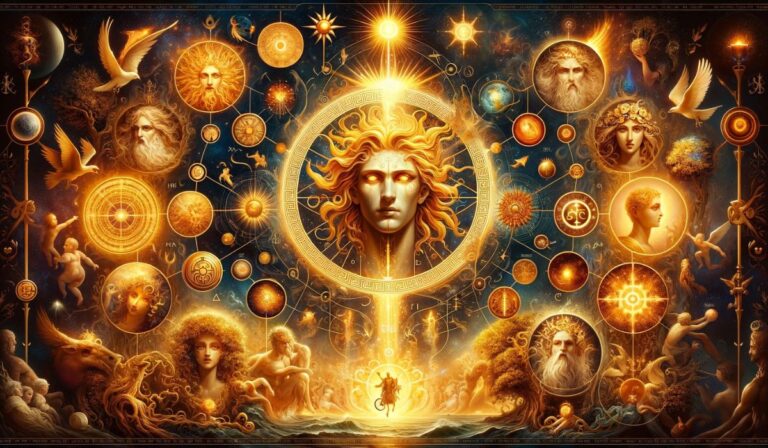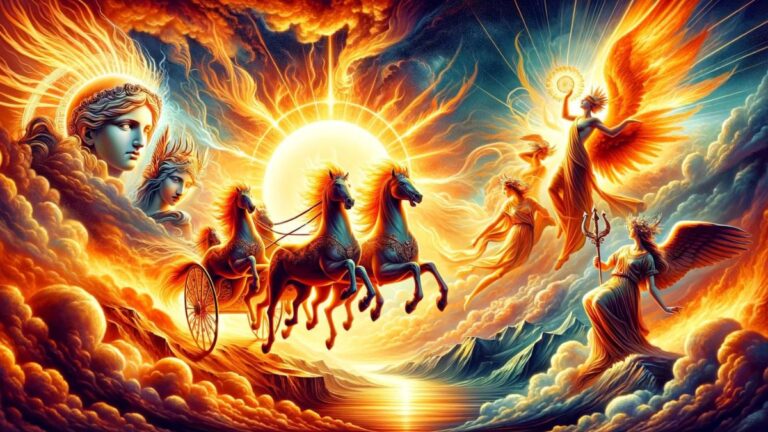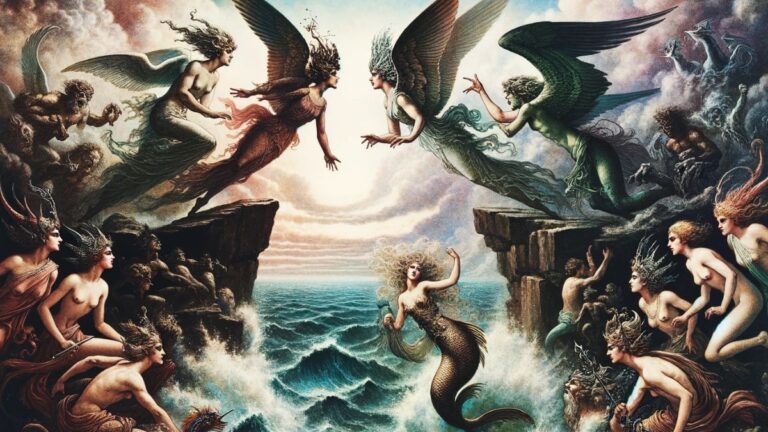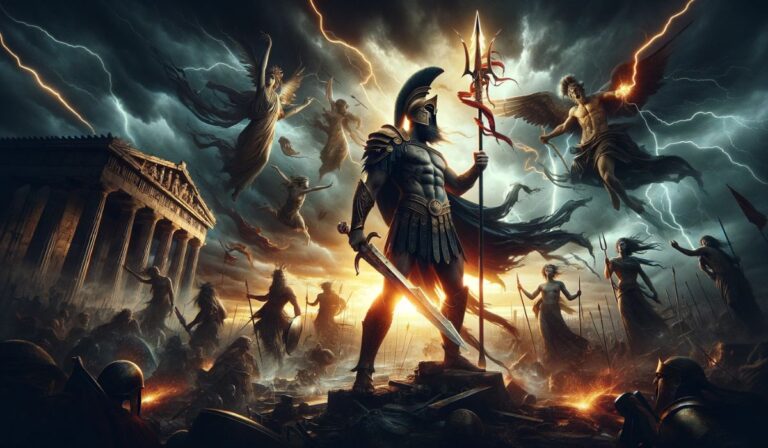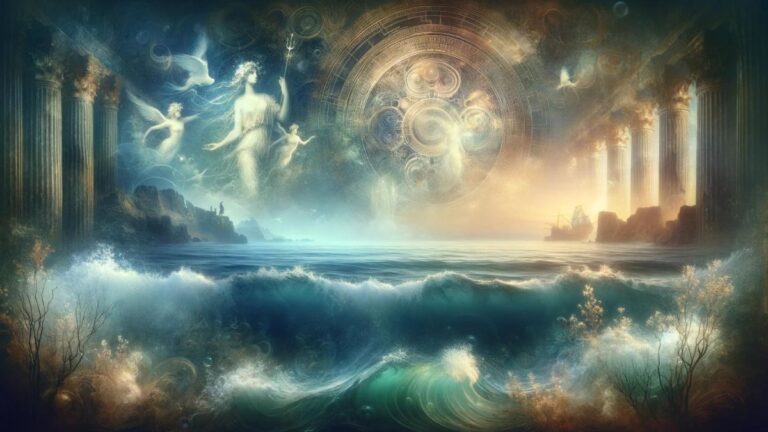Perun vs Veles: The Eternal Battle in Slavic Mythology
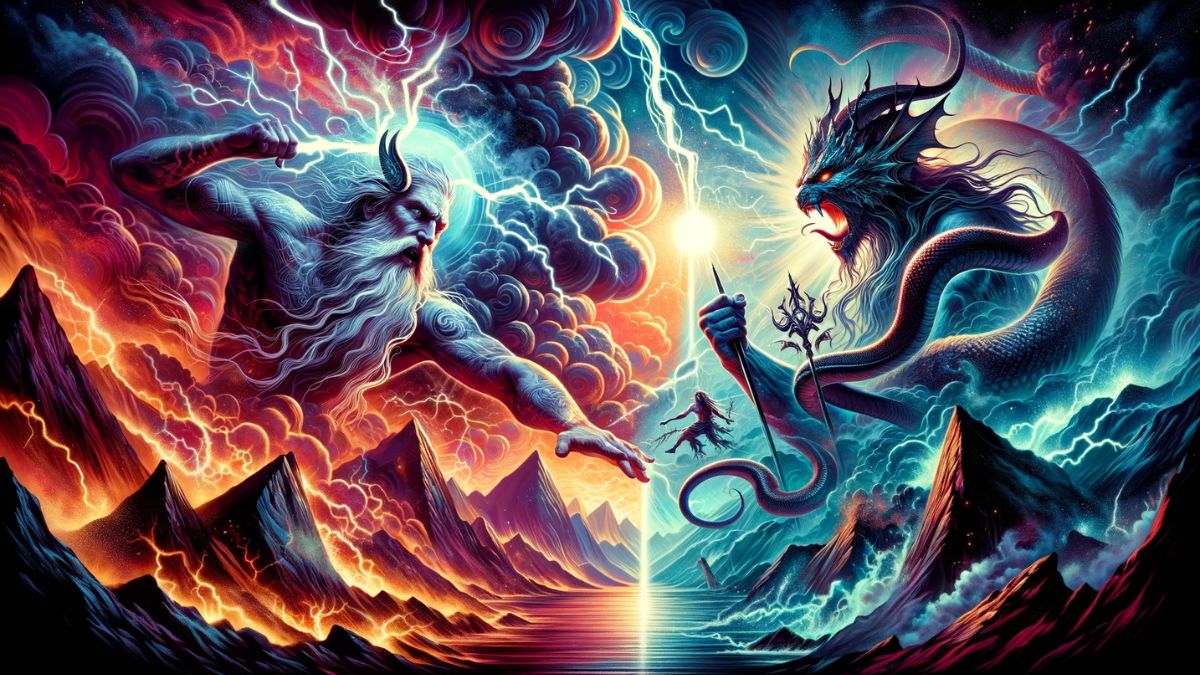
In the heart of Slavic mythology lies an age-old clash that captures the imagination, the epic standoff between Perun, the mighty god of thunder and sky, and Veles, the crafty deity of the underworld and earth. This legendary battle isn’t just a tale of good versus evil; it’s a deep-rooted narrative that showcases the eternal struggle between order and chaos, mirroring the natural cycles and human experiences.
Who are Perun and Veles?
In the enchanting realm of Slavic myths, two figures stand out for their enduring feud: Perun, the formidable god of thunder and order, and Veles, the cunning deity of the underworld and chaos. Their stark contrasts in duty and domain set the stage for an eternal battle that resonates through Slavic folklore.
Perun: The Thunderer
Perun is the epitome of celestial might. Armed with his thunderbolts and often depicted soaring across the sky in a chariot drawn by goats, he is the defender of the cosmos and the enforcer of moral order. His role as the chief god in the Slavic pantheon underscores his paramount importance in maintaining balance and justice.
In addition to his fearsome arsenal, Perun is also revered for his connection to the elements. Rain, storms, and lightning are all within his command, making him a vital deity for agricultural societies. His blessings are sought for fertility and protection, linking him intimately with the cycle of life and the well-being of the community.
Veles: The Trickster
Veles, in stark contrast, embodies the mysteries of the underworld. With domains over cattle, commerce, and the arcane arts, Veles represents the untamed and unpredictable aspects of the world. He is often depicted as a serpent or dragon, lurking in the waters or the forests, challenging the order imposed by Perun.
Veles’ cunning and versatility make him a deity of transformation and resilience. His ability to navigate between the worlds of the living and the dead, coupled with his patronage of wealth and poetry, adds layers of complexity to his character. Veles is not just a god of the underworld but a symbol of the cycles of life and the potential for rebirth and renewal.
The Roots of the Rivalry
The conflict between Perun and Veles is as old as the world itself, rooted in the fundamental clash between order and chaos. Perun stands as the guardian of the celestial order, the upholder of truth and justice. His lightning bolts are not just weapons but symbols of divine retribution against any form of disorder.
Veles, on the other hand, thrives in the shadows and the unknown. His domain over the underworld and his trickster nature make him a challenger to Perun’s authority. Veles’ attempts to ascend from the underworld and encroach upon the realms of the living and the gods ignite the fury of Perun, leading to epic battles.
The cycle of their battles reflects the natural cycle of seasons and life. Their eternal struggle is not just personal but represents the dynamic balance of the universe. The victory of Perun ensures the continuation of life and order, while Veles’ disruptions are necessary for change and renewal, preventing stagnation.
Symbols and Powers
In the tapestry of Slavic mythology, symbols and powers wielded by gods carry deep meanings. Perun’s thunderbolt is a key symbol, representing his power over the elements and his role as the divine enforcer. His association with the oak tree, a symbol of strength and endurance, further emphasizes his steadfast nature.
Veles, with his serpent form, symbolizes transformation and the cyclical nature of life and death. His powers extend into the realms of magic and the unseen, granting him the ability to traverse different worlds and influence fate from the shadows.
The contrasting symbols and powers of Perun and Veles illustrate the dualities present in nature and human life. Their attributes reflect the balance between creation and destruction, highlighting the interconnectedness of all things.
The Battle Through the Seasons
The legendary battles between Perun and Veles are not just mythic tales but are deeply intertwined with the changing of the seasons. Spring and summer storms are seen as manifestations of their clashes, with Perun’s thunderbolts striking down at Veles, who retreats into the earth, only to rise again.
This cyclical battle mirrors the agricultural cycle, where the death of winter gives way to the rebirth of spring. The victory of Perun ensures the return of warmth and life, while Veles’ retreat is akin to the necessary withdrawal of the earth to rejuvenate.
The mythological battles also reflect the human experience of the unpredictable forces of nature and life. Their ongoing struggle symbolizes the eternal cycle of destruction and renewal, a reminder of the delicate balance that sustains the world.
Impact on Slavic Culture
The myth of Perun and Veles has left a profound impact on Slavic culture, influencing religious practices, folklore, and cultural identity. Festivals and rituals often celebrated the victory of Perun, invoking his protection and blessings for fertility and prosperity.
This mythology also shaped moral and ethical codes within Slavic societies, where the virtues represented by Perun—justice, bravery, and honor—were highly esteemed. Veles’ association with wealth and the arts added layers to the cultural fabric, acknowledging the importance of adaptability and wit.
The enduring legacy of Perun and Veles in Slavic culture serves as a testament to the deep connection between people and the mythological narratives that help them make sense of the natural and spiritual worlds. Their stories offer insights into the values and beliefs that have shaped Slavic civilizations through the ages.
Modern Interpretations
In contemporary times, the tale of Perun and Veles has found new life through various forms of media and cultural expressions. Modern literature, music, and art continue to explore and reinterpret their epic battles, highlighting the timeless relevance of these mythic figures.
The themes of their conflict, embodying the struggle between order and chaos, resonate with modern audiences facing the complexities of the 21st century. Their dynamic opposition serves as a metaphor for the personal and societal challenges encountered in an ever-changing world.
Moreover, the revival of interest in Slavic mythology has sparked discussions on identity, heritage, and the importance of preserving cultural narratives. Perun and Veles stand as symbols of resilience and adaptability, inspiring a new generation to delve into the rich tapestry of Slavic folklore and its profound wisdom.

